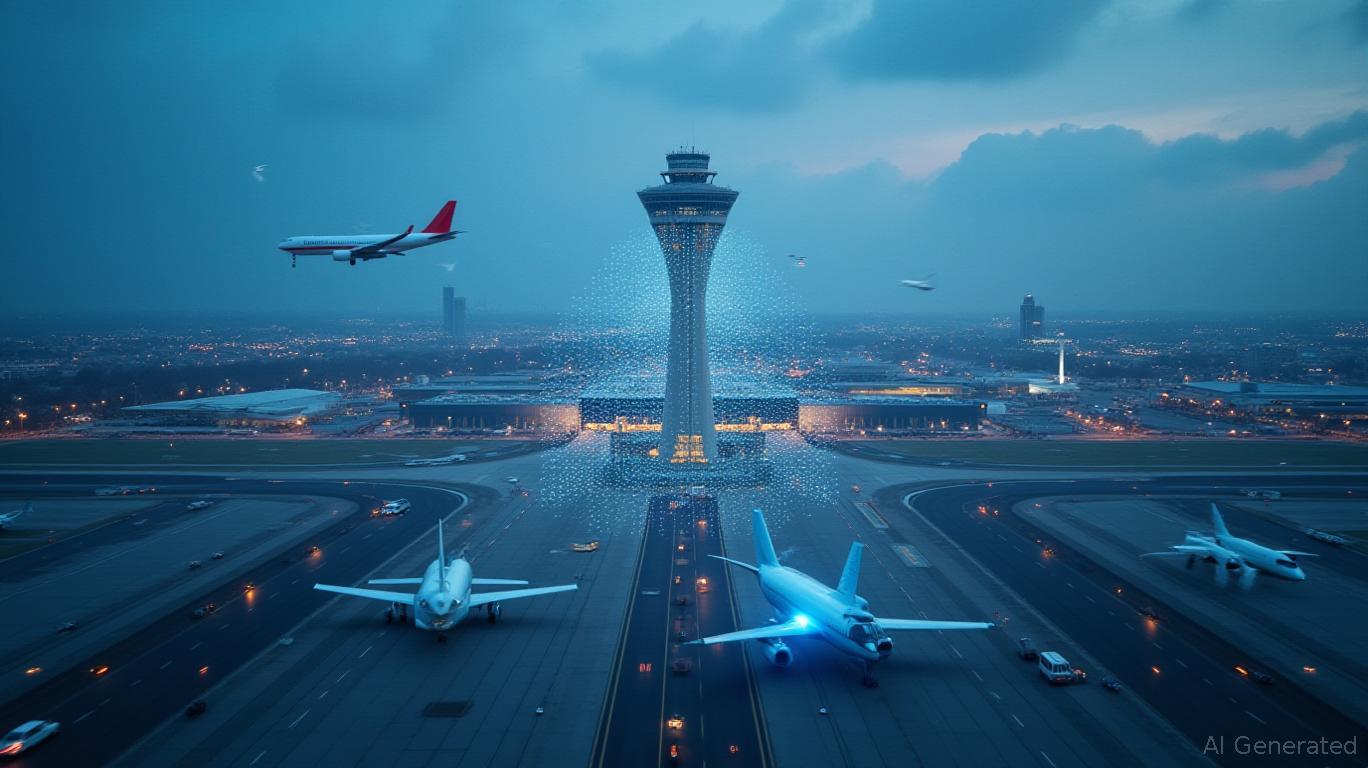FAA Safety Reforms Create a Boom in ADS-B Technology and Aerospace Safety Systems
The January 2025 midair collision near Washington D.C.'s Reagan National Airport, which claimed 67 lives, exposed critical flaws in U.S. airspace safety systems. The tragedy has since spurred sweeping regulatory changes, with the Federal Aviation Administration (FAA) mandating new technologies and operational protocols to prevent future disasters. Among the most consequential reforms is the universal adoption of Automatic Dependent Surveillance-Broadcast (ADS-B) technology—a move that has created a golden opportunity for investors in aviation tech and defense sectors.
The Regulatory Shift: ADS-B as the New Standard
The FAA's post-collision reforms prioritize real-time situational awareness, with ADS-B being a cornerstone of the new framework. Following the crash, which involved a U.S. Army helicopter that had not transmitted location data for 730 days, the FAA now requires all aircraft near Reagan National Airport—including military and commercial vehicles—to broadcast their position via ADS-B Out. This mandate ensures air traffic controllers receive precise, second-by-second updates on aircraft locations, drastically reducing collision risks.
The reforms extend beyond Washington D.C. The FAA has launched nationwide reviews of high-traffic airports, with similar ADS-B requirements likely to follow. Defense contractors and tech firms that provide ADS-B hardware, software, and integration services stand to benefit handsomely.

Investment Opportunities in ADS-B Technology
The ADS-B market is already booming, but regulatory tailwinds will accelerate growth. Key players include:
Honeywell International (HON): A leader in avionics systems, Honeywell supplies ADS-B transponders and navigation software. Its technology is installed in both commercial and military aircraft.
Rockwell Collins (part of Raytheon Technologies, RTX): Provides advanced ADS-B solutions and flight management systems. RTX's integration of ADS-B with broader defense contracts positions it as a long-term beneficiary of safety reforms.
Garmin (GRMN): Specializes in ADS-B receivers and portable avionics for general aviation. Its cost-effective solutions are critical for smaller aircraft operators now required to comply with the mandates.
Leidos (LDOS): A defense contractor with expertise in air traffic management systems, Leidos is well-positioned to win FAA contracts for ADS-B infrastructure upgrades.
Beyond ADS-B: The Rise of AI-Driven Safety Systems
The FAA's reforms also emphasize predictive analytics and AI-driven data analysis to preempt safety risks. The agency now uses machine learning tools to parse millions of flight reports, identifying patterns in near-misses and congestion. This creates opportunities for:
Palantir Technologies (PLTR): Its data analytics platforms are ideal for processing FAA safety data and predicting risks in real time.
Boeing (BA) and Lockheed Martin (LMT): Both are developing AI-powered systems to enhance air traffic control and collision avoidance, with potential FAA funding for such projects.
Risks and Considerations
While the long-term outlook is bullish, investors should monitor potential pitfalls:
- Regulatory delays: The FAA's history of slow modernization could slow the rollout of ADS-B mandates.
- Technological hurdles: Older aircraft may require costly retrofits, and cybersecurity risks in ADS-B systems could emerge.
- Political interference: Past controversies, such as the Trump administration's clashes with FAA contractors like Verizon, highlight risks of policy shifts.
Conclusion: A Clear Flight Path for Investors
The FAA's reforms are not merely reactive—they represent a paradigm shift toward smarter, safer skies. ADS-B adoption and AI integration are now existential priorities for aviation stakeholders. Investors should prioritize companies with proven expertise in avionics, data analytics, and defense contracting.
Recommendation:
- Buy into ADS-B hardware leaders like HON and GRMN for immediate exposure.
- Look to AI and analytics firms like PLTR for long-term growth tied to predictive safety systems.
- Consider diversified defense giants like RTX and LDOS for broad regulatory plays.
The skies may never be completely risk-free, but the post-2025 reforms have created a once-in-a-generation chance to profit from aviation's technological evolution. Buckle up—it's time to take flight.

Comments
No comments yet